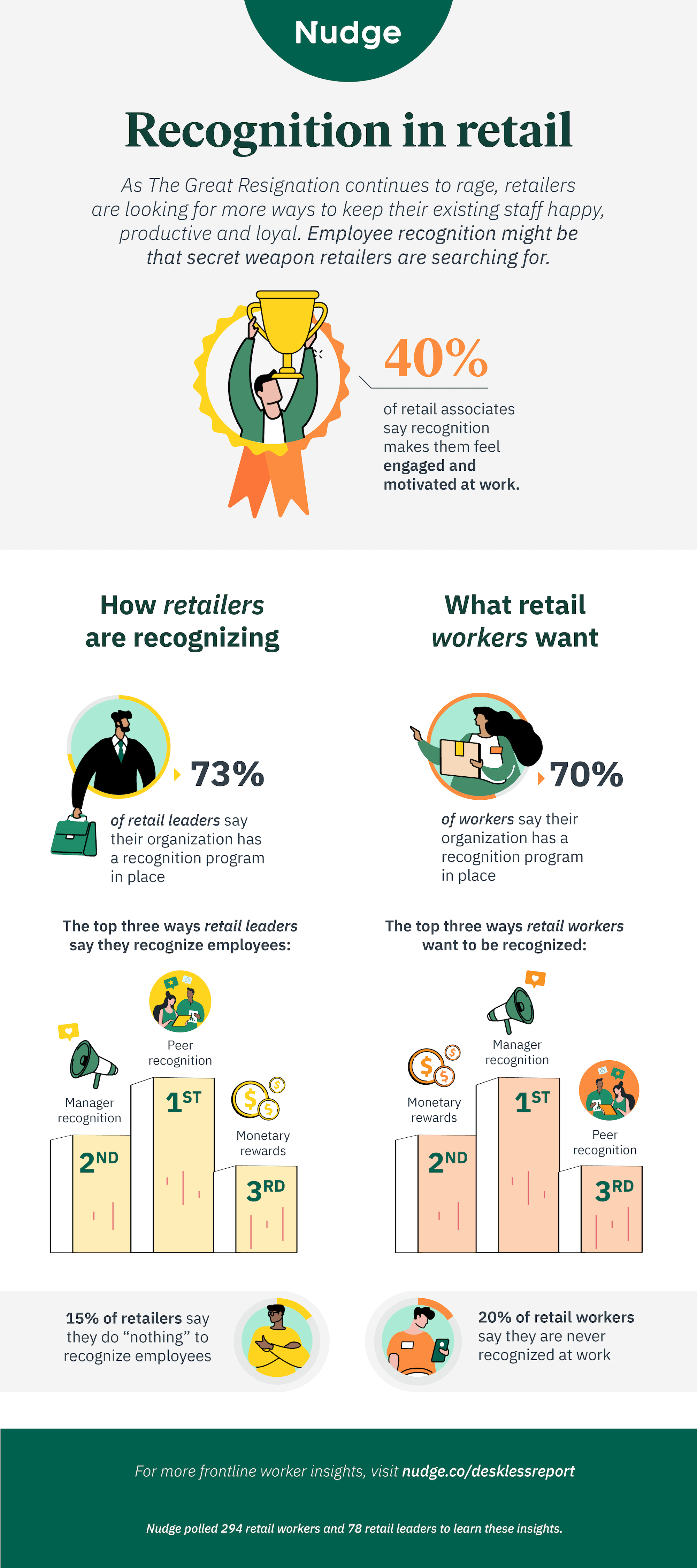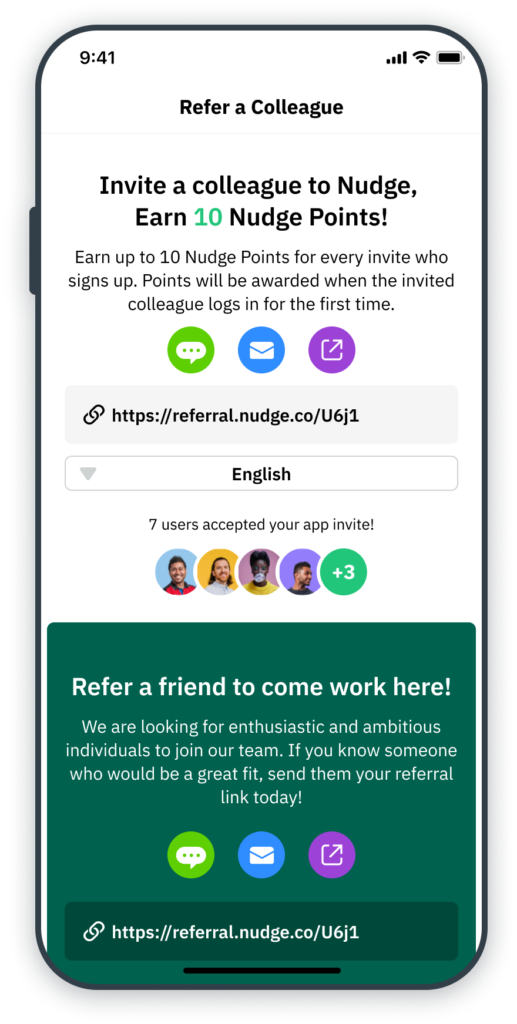The labor crisis rages on – and it’s hitting frontline organizations hard.
Especially in foodservice and retail organizations, everyone’s looking for the answer. And while there’s no magic bullet that is guaranteed to help you hire and retain staff, there is one strategy that could be a big help: improving your employer brand.
Employer brand gets discussed a lot in deskbound organizations (especially startups) but less so in frontline organizations. But make no mistake: it can play a huge role in sourcing, hiring, and retaining staff.
What is an employer brand?
An employer brand is the public perception of how you hire, manage, and care for the people who work for you. It’s what a potential job candidate learns about you before applying. As employer brand author and speaker James Ellis puts it, “If you can name what you care about, line it up with what you reward, and then project that out to the world, you got yourself an employer brand.”
An employer brand is closely linked to your EVP, your employee value proposition, which essentially explains what workers could get by working with your organization. And it’s not just candidates and employees who see your employer brand; consumers see it, too. As do contractors, vendors, and even your competitors. That’s why it’s so critical to ensure you have a positive employer brand, which brings us to…
Why is employer branding important?
There are a number of reasons why a strong employer brand is important for frontline organizations – and it goes far beyond the labor crisis. Here are a few of the benefits of investing in your employer brand:
It influences the quality of your candidates
As a frontline employer, you want to attract the best and brightest candidates to join your staff. As it happens, the feeling is mutual. Candidates also want to work for the best companies, and use your employer brand as a criteria. In fact, one study found that 92% of workers would consider changing jobs if offered a role with a company with a good reputation.
The reverse is also true. If you have a poor employer brand, you are literally driving away potential candidates. 50% of candidates say they wouldn’t work for a company with a bad reputation, even for a pay increase.
It’s linked to employee loyalty
Your employer brand doesn’t just affect candidates or new hires; it also affects the employees you already have on staff.
And why wouldn’t it? You want to be proud of where you work, and if your organization is perceived as being a bad one, then people will start walking out the door – especially during The Great Resignation. However, employees have a positive view of their employer, it will encourage them to stick around longer (and refer others to apply!).
Companies actively investing in employer branding can reduce turnover by as much as 28%, which drastically reduces the need to go looking for new candidates.
It impacts customer/brand perception
You need to take a good hard look at what employer brand you’re transmitting out to the world – intentional or not. You might think that your employer brand and your product brand are entirely separate things, but your customers do not. We’re seeing consumers take more of an interest in how organizations treat their staff.
According to CareerArc, 64% of consumers have stopped purchasing a brand after hearing news of that company’s poor employee treatment. So mistreating employees is bad for business, both in a figurative and literal sense.
What affects employer brand?
Your employer brand can be manipulated, altered, and affected by a multitude of factors. Some will be under your control, others not so much.
Company branding
Your company brand is a critical component of your employer brand – and you need to make sure they’re aligned. How does your company present itself as an employer? What’s your mission and brand purpose, and how are they communicated to the outside world? What is your philosophy around customer or guest experience? All these and more are part of your company brand.
Employee experience
Your employer brand exists whether you want it to or not – the recommendations we’re making are meant to ensure you’re fostering a positive brand. And a big part of a positive employer brand is offering your staff the employee experience that you’re proud to share. What is your onboarding program like? What support and training do you provide? What tools and tech does your staff have access to? What programs and initiatives can your staff access? All of this contributes to your employee experience – and, in turn, your employer brand.
Employee testimony
What your current and former employees say about your company is extremely important. Employees have developed a strong skepticism toward management, and will consider fellow employees’ words more credible than any message the brand puts out. This employee testimony can exist anywhere: on Glassdoor, Reddit, social media, and even word-of-mouth.
Consider this: according to Glassdoor, 86% of job seekers will look at company reviews and ratings to decide on where to apply for a job. What your existing employees have to say plays a huge role in your ability to keep your locations staffed.
Customer stories
Believe it or not, customers actually notice how you treat your employees. They can tell if an employee loves their job and takes pride in their workplace, because it shows in the quality of the service and the attitude of the employee. By the same token, it’s really easy to tell when an employee is unmotivated.
So why should this matter? Because customers gossip. One study found that 54% of respondents who had shared a bad experience said they shared it more than 5 times. Word will get around, it will affect how people perceive you.
Awards and certifications
An award from a respected organization can give your employer brand a major boost. It’s formal recognition that your business treats its employees well and makes you look better to potential candidates.
Many award-giving bodies, like Great Place To Work, do so independently, meaning they take the proactive step of researching the companies on their list (including yours). They usually request interviews or survey entries from current employees, as well as investigate other things like your HR policies, facilities, and benefits.
For example, when IKEA prioritized employee experience by promoting a flat hierarchy, a strong employee development program, and living wages, it received a Randstad Award and was honoured as the most sought-after workplace in Sweden.
Being included on these is a pleasant surprise, but you don’t have to sit and wait for recognition. Some awards bodies accept applications and nominations. And be sure to put those award badges on your careers page!
How to improve your employer brand
Now that you know how important the employer brand is for remedying labor shortages for frontline organizations, let’s review how to actually build it up
Look at your core purpose
According to Hospitality Insights, the first step for frontline organizations looking start improving their employer brand is to look at their existing core mission:
“Small, purpose-led initiatives can help strengthen your brand. When relatively new to the concept of employer branding, a good place to start is by being inquisitive and reflective. The first step is to refocus on your company’s purpose and identity, and understand whether there is a shared purpose within your organization. Ask your current employees why they chose your company, what gets them out of bed every morning, what is the company’s purpose in their eyes?”
Making sure you have your purpose aligned is a great first step in communicating that purpose through your employer brand.
Review your management culture
Onsite leadership is one of the biggest drivers of employee satisfaction. A great leader will inspire loyalty and boost store performance, while a bad one will create a toxic environment that pushes employees away. In fact, according to The Deskless Report, feedback about a manager is one of the top types of feedback frontline workers want to share with their organization.
Upgrade your employee experience
Fact: frontline workers are coming to work for more than a paycheck. In fact, according to The Deskless Report, 49% of frontline workers said employee benefits and programs make them feel engaged and motivated at work – 38% feel the same about a sense of community at work, and 37% feel that way about recognition programs.
In other words: workers appreciate employers that offer more than just a paycheck. Take fast casual restaurant chain Chipotle: they’ve managed to hire through the labor crisis by offering educational opportunities, mental healthcare programs, and performance-based employee bonuses.
Use social media to engage candidates
Your company’s public persona shouldn’t just promote your products and services. It should also serve your employer brand. Use your social media platform to call attention to the positive things you do for your employees. Highlight frontliners who deliver exceptional performance. Use hashtags to participate in important societal and cultural discussions that concern your workers.
For example, Starbucks has an Instagram account dedicated to their employer brand, which it uses to interact with potential candidates. They also leverage hashtags like #extrashotofgood and #tobeapartner https://clearhrconsulting.com/blog/hiring/starbucks-canada/ in conversations and answer candidate questions.
—
To attract the best candidates possible, you have to develop an employer brand that appeals to the kinds of workers you want on your team.
But just as important is making sure that the employee experience actually matches the employer brand you present. Do it right, however, and your frontline workers will be so happy to work for you that they’ll be among the first to help source more candidates. More on that soon….
![[Infographic] Employee recognition in retail](https://nudge.co/wp-content/uploads/2022/03/Employee-recognition-in-retail-Nudge-1080x675.jpg)







